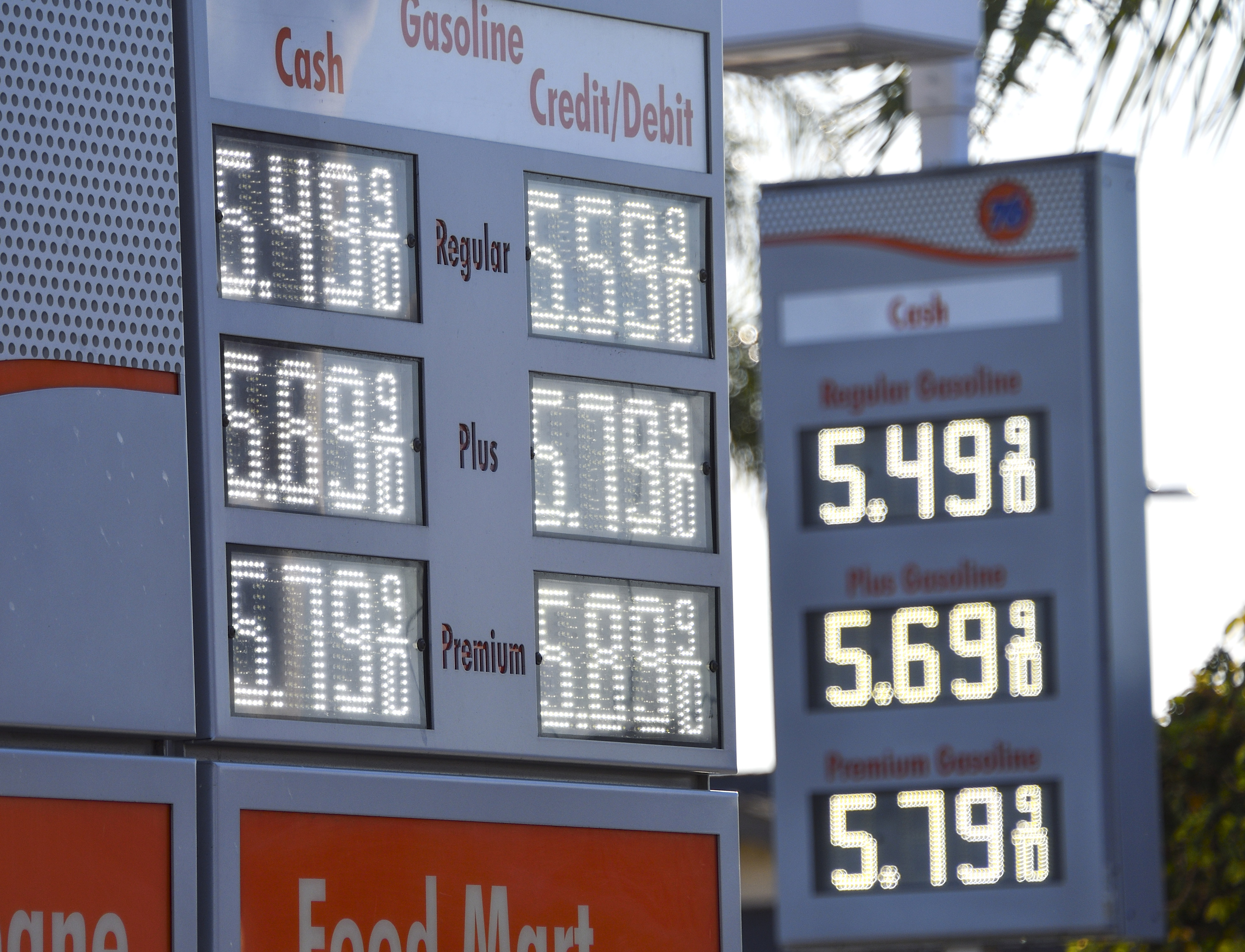Across the country, including the Chicago area, gas prices are soaring, and quickly, but how high could they go?
As gas prices continue to soar nationwide, where does the national average stand and how does Illinois' rate compare?
The national average for gas prices was up to $4.252 per gallon Wednesday, according to auto club AAA. The rate marks yet another day of increasing prices in the U.S.
The average price for a gallon of gasoline in the U.S. hit a record $4.17 Tuesday, rising by 10 cents in one day, and up 55 cents since last week, according to auto club AAA.
The price of regular gas broke $4 a gallon on Sunday for the first time in nearly 14 years and is now up nearly 50% from a year ago. Monday's national average of $4.104 per gallon broke a record for the all-time high, though that is not adjusted for inflation, according to GasBuddy.
The previous record was set in 2008, when prices averaged $4.103 per gallon. When adjusted for inflation, however, the record price would be equal to about $5.24.
Still, even that's a number some experts fear could be broken.
As of Wednesday morning, the average price of gas in Illinois was $4.527, according to AAA. That's up from $4.425 on Tuesday.
While Illinois remains among the highest in the country, several West Coast states are seeing prices even higher. California saw totals of $5.573 and Nevada saw prices at $4.772.
Feeling out of the loop? We'll catch you up on the Chicago news you need to know. Sign up for the weekly Chicago Catch-Up newsletter.
“Americans have never seen gasoline prices this high, nor have we seen the pace of increases so fast and furious. That combination makes this situation all the more remarkable and intense, with crippling sanctions on Russia curbing their flow of oil, leading to the massive spike in the price of all fuels: gasoline, diesel, jet fuel and more,” Patrick De Haan, head of petroleum analysis at GasBuddy, said in a statement. “It’s a dire situation and won’t improve any time soon. The high prices are likely to stick around for not days or weeks, like they did in 2008, but months. GasBuddy now expects the yearly national average to rise to its highest ever recorded.”
De Haan said "forget the $4 per gallon mark," the nation is actually pushing closer to a national average of $4.50.
“We’ve never been in this situation before, with this level of uncertainty... Americans will be feeling the pain of the rise in prices for quite some time," he said.
According to GasBuddy, prices are expected to continue rising through the summer months, even more than usual. Some forecasts predict the national average could reach $4.25 per gallon by Memorial Day.
Some experts fear that a ban on Russian oil imports could even lift averages over $5 per gallon.
President Joe Biden announced Tuesday the U.S. will ban all Russian oil imports, toughening the toll on Russia’s economy in retaliation for its invasion of Ukraine, but he acknowledged it will bring costs to Americans, particularly at the gas pump.
He warned that Americans will see rising prices, saying, “Defending freedom is going to cost.”
Biden said it was understandable that prices were rising, but cautioned the U.S. energy industry against “excessive price increases” and exploiting consumers.
“The United States economy can fully handle any of the challenges associated with higher oil prices,” Jason Furman, a Harvard professor and former top economic adviser to President Barack Obama. “But it will bring some challenges. We’re going to have higher prices at the pump, and there’s no way around that.”
The news of the looming U.S. oil ban sent gasoline prices to their highest level ever recorded.
A month ago, oil was selling for about $90 a barrel. Now, prices are surging around $130 a barrel as buyers shun Russian crude. Refiners had already feared being left with oil they couldn't resell if sanctions were imposed.
Energy analysts warn that prices could go as high to $160 or even $200 a barrel if buyers continue shunning Russian crude. That trend could send U.S. gasoline prices past $5 a gallon, a scenario that Biden and other political figures are desperate to avoid.
The United States is the world's largest oil producer — ahead of Saudi Arabia and Russia — but it is also the biggest oil consumer, and it can't meet that staggering demand with domestic crude alone.
The U.S. imported 245 million barrels of oil from Russia last year — about 8% of all U.S. oil imports — up from 198 million barrels in 2020. That's less than the U.S. gets from Canada or Mexico but more than it imported last year from Saudi Arabia.
The increasingly violent Russian attack on Ukraine has increased calls to cut off Russia from the money it gets from oil and natural gas exports. Europe is heavily dependent on Russian gas.
Talk of a ban on Russian oil has led U.S. officials to consider other sources that are currently limited. In what was supposed to be a secret trip, senior U.S. officials traveled to Venezuela over the weekend to discuss the chance of easing oil sanctions on the major crude-exporting country.



